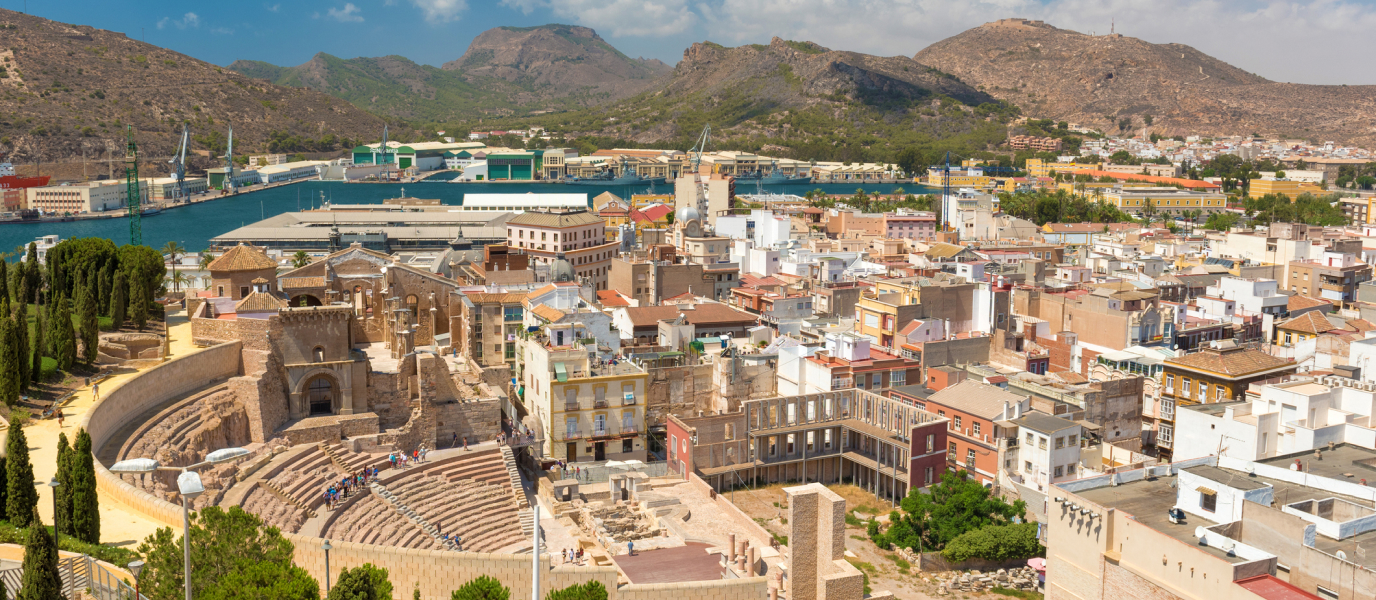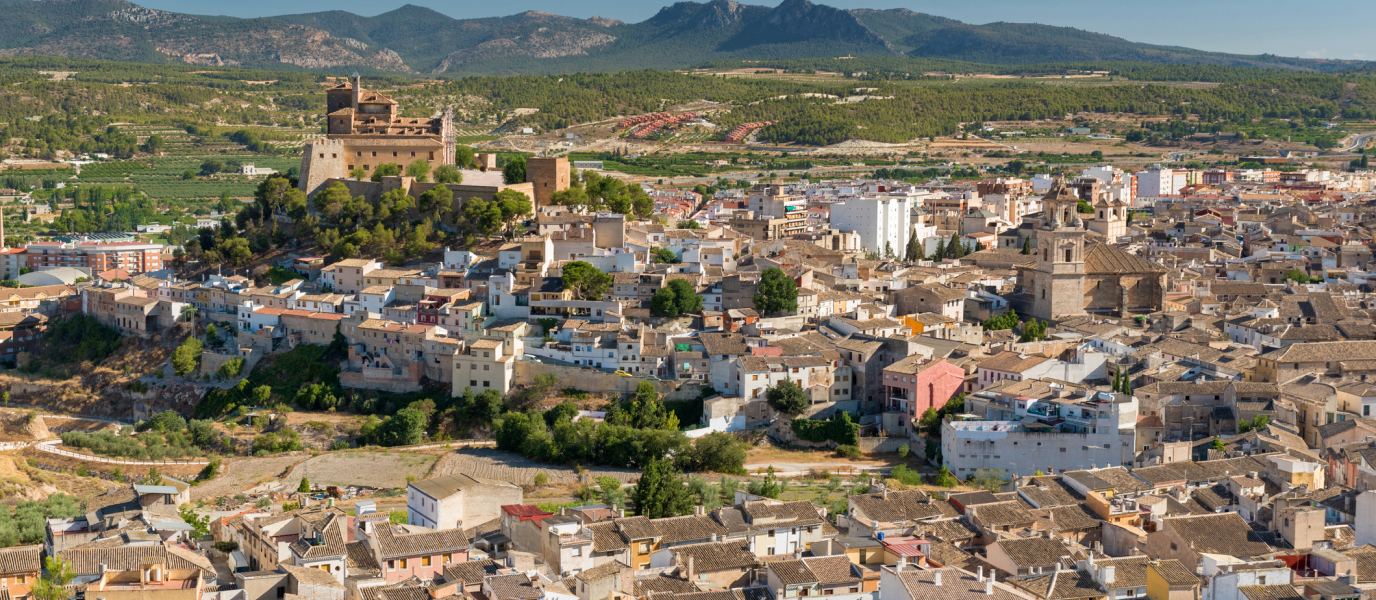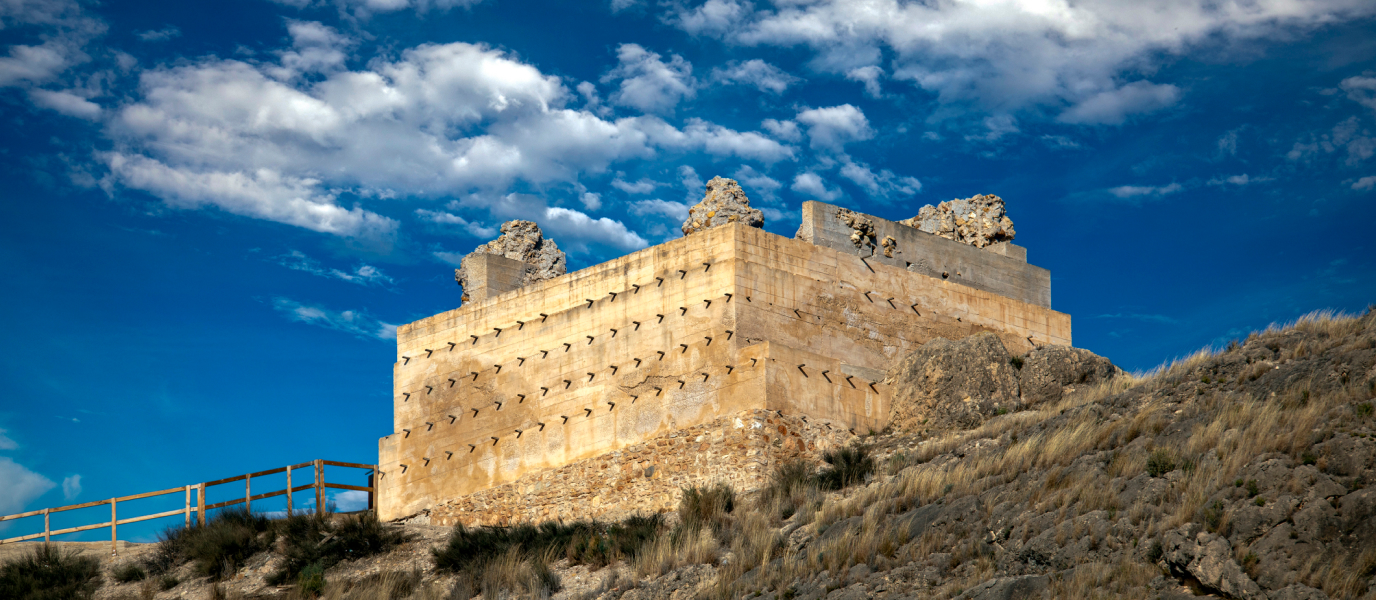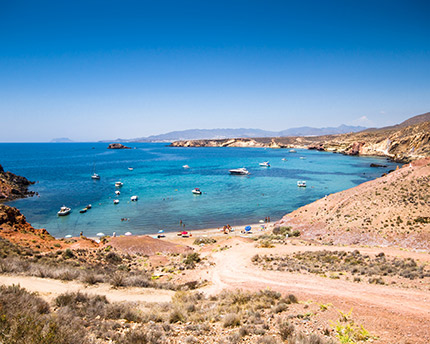Cartagena is a city with a history dating back to the year 227 B.C., when the Carthaginian general Hasdrubal the Fair founded the city of Quart Hadasht (the embryonic Roman Carthago Nova, which would one day become the city of Cartagena).
Nowadays, Cartagena is the Region of Murcia’s second major city, with a thriving civil and military port and a significant and fascinating Roman legacy. Thanks to all this, Cartagena offers a great range of activities, and is a not-to-be-missed city for visitors to Murcia.
In this article, we will look at what to see in Cartagena, including the main historical attractions and the most popular beaches.
Roman Theatre
The highlight of Cartagena’s historical legacy is its Roman Theatre. Built between 5 and 1 B.C., to hold around 7,000 spectators, it was discovered in 1988. That year saw the launch of a major initiative to restore and promote the attraction. Although part of the theatre has been rebuilt, its current state does allow us to imagine what it was like to watch a performance here. Cartagena’s Roman Theatre is a monument that no visitor should miss.
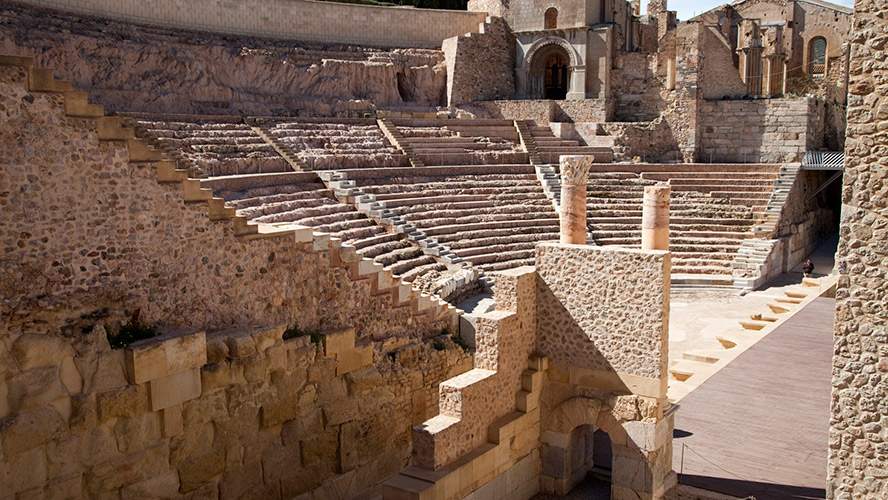
The Historic Quarter
Aside from the vestiges of the city’s Roman past, Cartagena’s historic centre is home to a few buildings that demonstrate the city’s prosperity in the late nineteenth century, derived from the mining industry and the heyday of the shipyards and the naval base.
The city centre is dotted with large, private houses, mansions, and civil and military buildings from that time, in a mixture of Baroque, neo-Classical and Modernista styles. In fact, Cartagena is one of Spain’s most important cities where Modernist architecture is concerned. Outstanding edifices include the Town Hall, the Casino, the Gran Hotel, the Aguirre Palace, Casa Cervantes, and Casa Maestre, the last inspired by Gaudí himself.
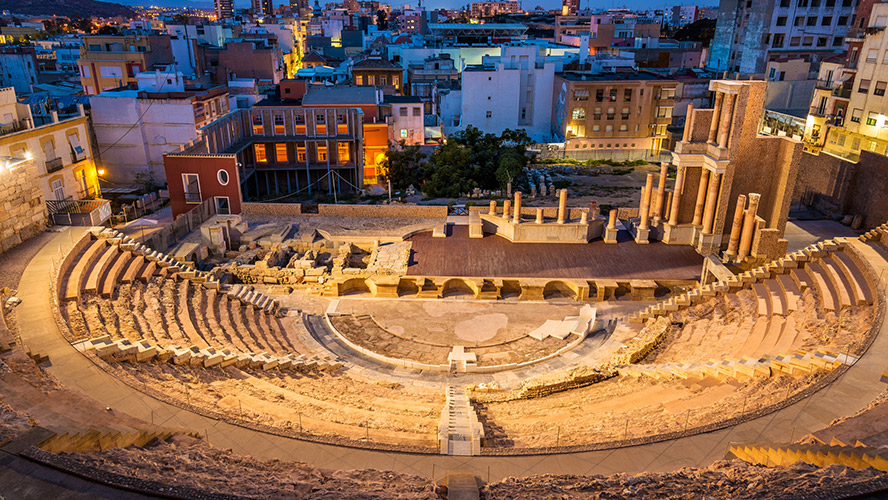
The Peral submarine
Cartagena’s naval base and its shipyards are two key elements in understanding the history of the city. A Cartagena sailor, Isaac Peral, is even considered to be the inventor of the first electrically-driven torpedo submarine. The prototype was built in the San Fernando shipyards in Cádiz, and launched in 1888. Now we can see it in Cartagena’s Naval Museum, and there is a replica on a traffic roundabout on Paseo de Alfonso XIII.
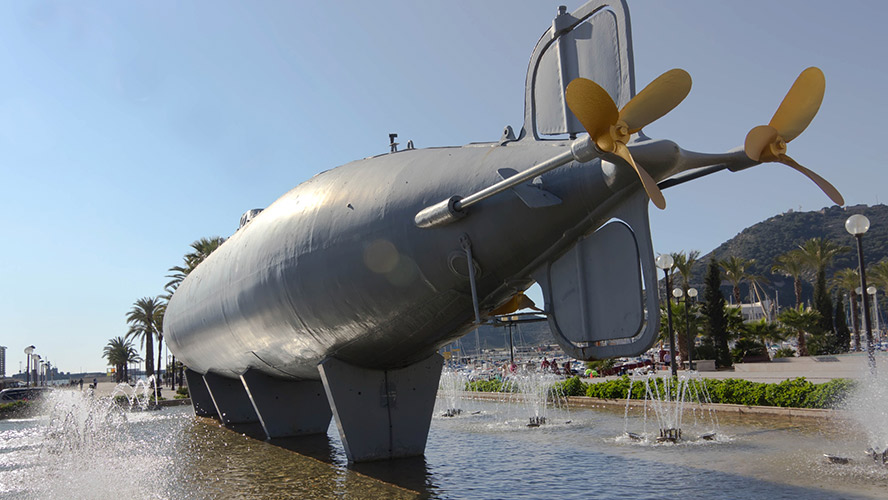
Casa de la Fortuna
Another archaeological site of Roman origin is the Casa de la Fortuna. This Roman house dating from the first century B.C. was discovered in 1971, and now almost all the remains, from floor mosaics to mural paintings, is open to the public. To visit the house is to take a journey into the past, to imagine ourselves in the heart of a family home during Roman times.
The Castillitos Battery
Throughout its history, Cartagena has been an important military site in the Mediterranean, thanks to its strategic position as well as the natural protection offered by its bay. Evidence of the city’s defensive role can be seen in the batteries and fortifications spread along Cartagena’s coastline. One of the most noteworthy is the Batería de Castillitos, located on Cabo Tiñoso [Tiñoso Cape], to the west of the city. This fortification, built between 1933 and 1936, has been declared an Asset of Cultural Interest. Its architecture resembles that of a medieval castle and blends into the landscape. It makes for a fascinating visit.
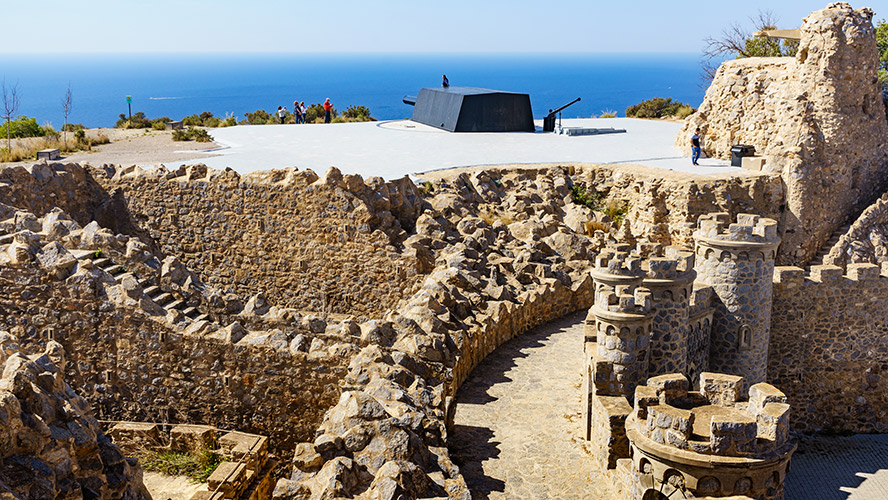
Castillo de la Concepción
Another fortification, this time of genuine medieval origin, is the Castillo de la Concepción, in the heart of Cartagena. Originally, it was a Moorish Alcazaba but after the Reconquest under Alfonso X, the new castle was built. The castle is worth a visit, and affords a spectacular view over the bay of Cartagena.
Port of Cartagena
Cartagena owes its past and its present to its renowned port, in civil as well as in military terms. A walk along Paseo de Alfonso XII will help us to appreciate the scale of this extraordinary infrastructure, in which can be seen fishing boats, huge container vessels, cruise liners, Navy ships, and small pleasure boats. In the port, you can visit the Naval Museum and Museo ARQUA, a maritime archaeology museum. One highly recommended activity is to continue walking along the Sendero Azul [Blue Path] to Cala Cortina at the mouth of the bay, for the glorious view over the sea.
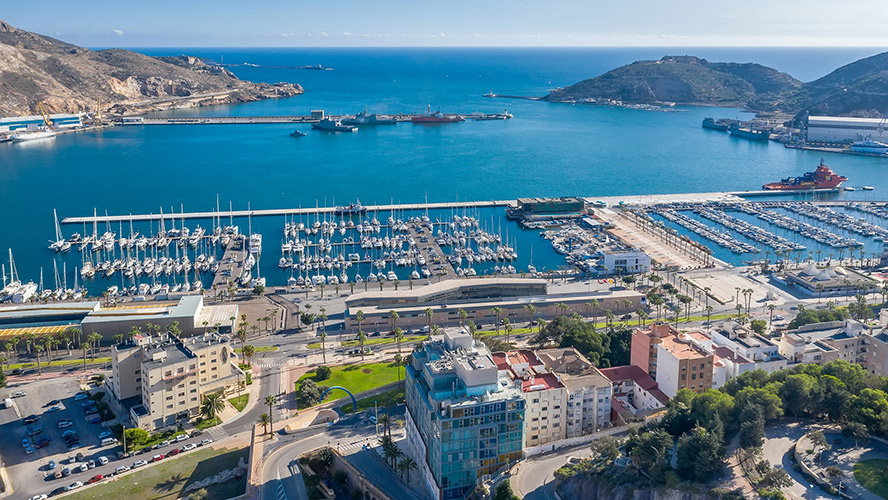
Roman Forum
In addition to the Roman Theatre, Cartagena’s Roman legacy is most evident in the remains of the Forum at the foot of one of the city’s hills, Cerro del Molinete. This archaeological site reveals noteworthy remains of elements such as the Curia, the Sanctuary of Isis, the thermal baths, the colonial Forum, and the Decumano, the city’s main street at that time. Both the Forum and its museum are an essential visit for anyone interested in Cartagena’s history.
Cartagena’s beaches
Apart from all the other attractions of Cartagena, this naval city also has several beaches scattered along its coastline, a few of which lie within the bay itself. From the Cabo Tiñoso area to the west, to the Cabo de Palos and La Manga del Mar Menor to the east, Cartagena’s long coastline offers a plethora of beaches and small coves in various nooks and crannies on the shore.
Some of Cartagena’s best beaches are:
- Playa de Levante: at the foot of the Cabo de Palos and the beginning of La Manga.
- Playa de Calblanque: a beach with an ecosystem formed by its sand dunes, away from the developed urban area.
- Cala Cortina: the nearest beach to the city, and surrounded by coastal defences.
- El Portús: well known for its nudist area.
- La Azohía: to the west of Cabo Tiñoso, a pleasant beach in a little fishing village. The waters here are a marine reserve, and you can go diving.
This is just a sample — travelling along the coast of Cartagena, you will come across many other coves – particularly between the city and Cabo Tiñoso or on the approach to Cabo de Palos.
Where to eat in Cartagena
On your sightseeing expeditions in Cartagena, don’t forget to visit some of the more typical bars and restaurants. In the centre, you will find bars such as Bodega La Fuente, a classic eatery for tapas and well-priced dishes, the very old Bar Sol, and its contemporary La Uva Jumillana — all classic wine and tapas establishments.
If you prefer restaurants, don’t miss the elegant La Marquesita or El Magoga (both recommended by Michelin) or if you’re a lover of fish and seafood, La Marisquería La Marina.

Where to stay in the province of Murcia
If you are planning to travel around the Region of Murcia, and you decide to stay in the provincial capital, a safe choice is the Occidental Murcia Siete Coronas hotel, a modern, four-star hotel with spacious guest rooms, located in the centre of the city of Murcia, right in Paseo de Garay.
This hotel is ideal, thanks to the range of room options it offers and to its facilities, ranging from a bar and restaurant to rooms for meetings and events.





























































